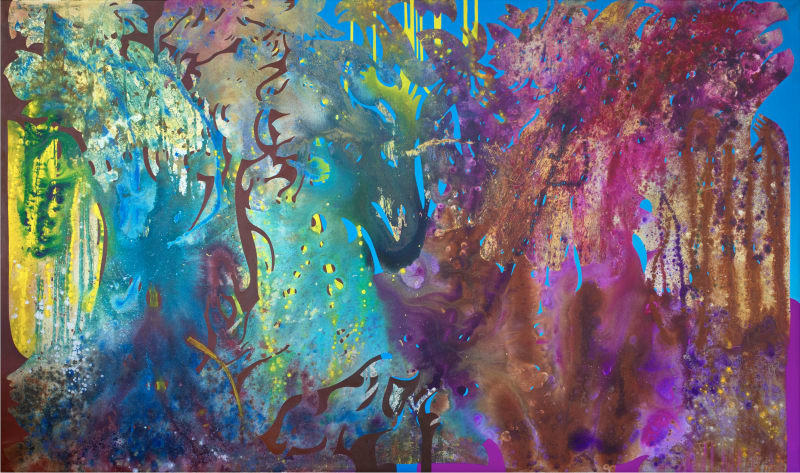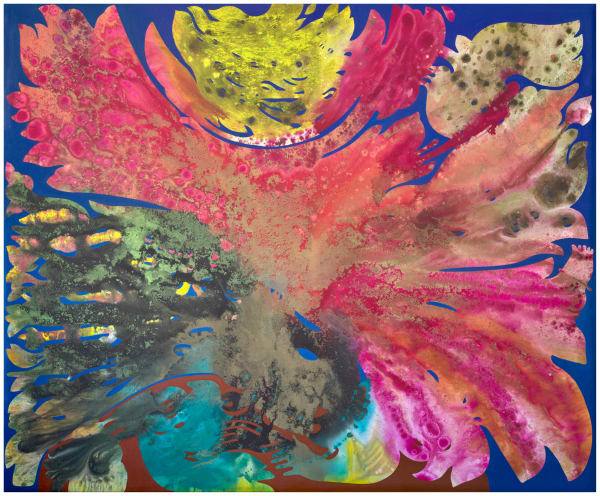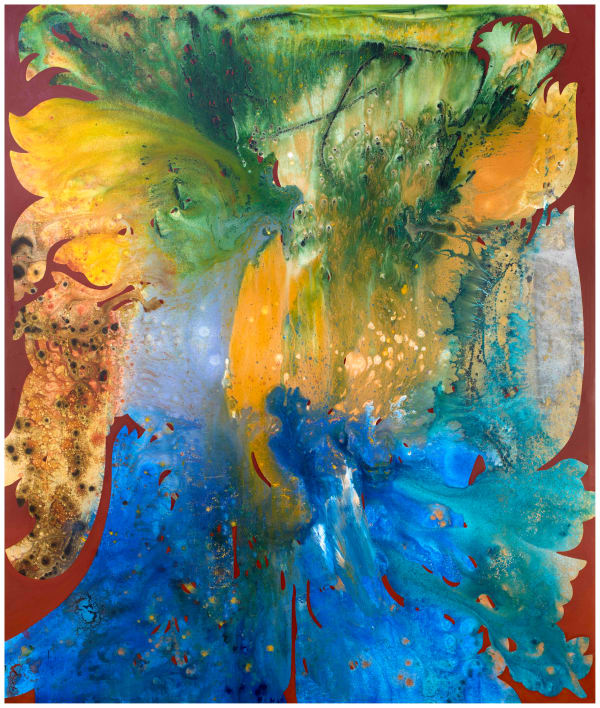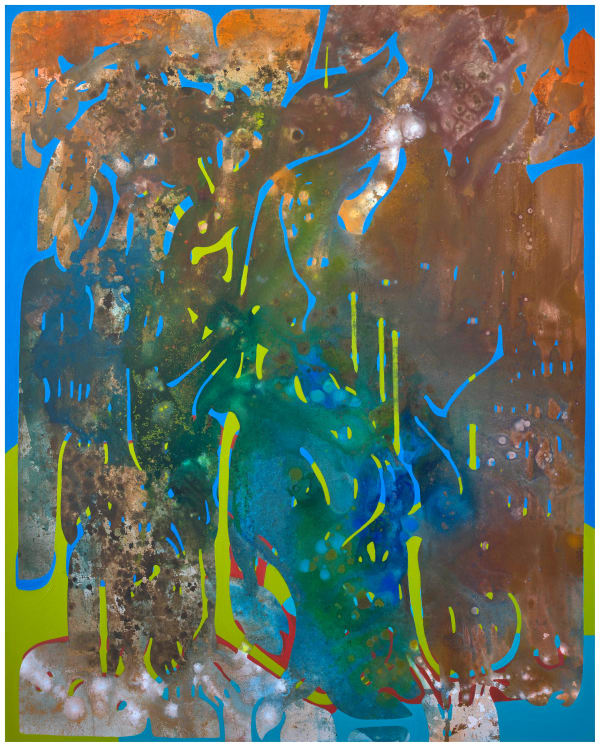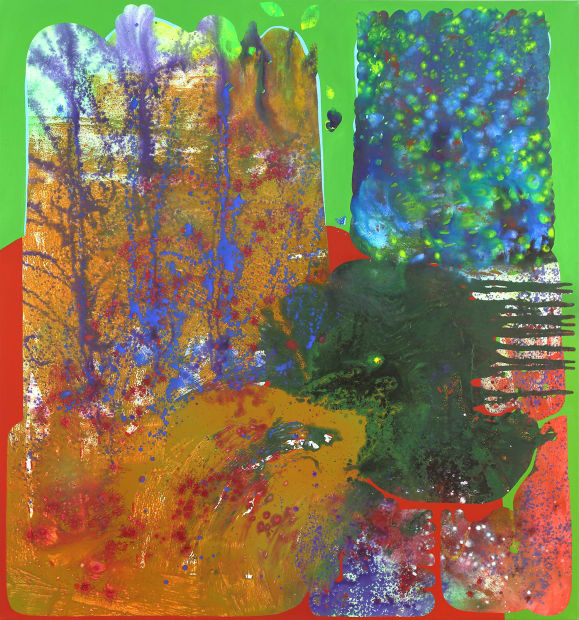VIAN SORA: Sky from Below
-
Overview
David Nolan Gallery is delighted to announce Vian Sora: Sky from Below, our second solo exhibition with the Iraqi-American artist who is one of the strong new energetic and authentic voices of our time. Sky from Below will be on view from March 7 until May 3, 2025, in advance of her solo museum show opening in June 2025 at the Santa Barbara Museum of Art and traveling to the Speed Art Museum, Louisville, and the Asia Society Texas, Houston. This traveling museum tour is a culmination of Sora’s great success of the last decade.
Sora was born in Baghdad in 1976 and currently lives in Louisville, Kentucky. The idea for the body of new work on view in Sky from Below began to percolate when the artist recently revisited the Middle East and flew over Iraq. After 18 years away, she still recognized traces of familiarity within the significantly changed landscape of her homeland. The title of the exhibition comes from memories of the artist’s childhood when she would look up at the sky, both innocently and because of the fighter planes that flew overhead. Sora poured the ensuing emotional chain reaction onto these canvases. The works approach the feeling of identity loss by creating an opposite world of lush environments and landscapes. The imagined, mythical landscapes and scenery represent an incessant dance between creating and annihilating, of adapting to new realities and multilayered existences.
Excerpts from John Yau, The Purpose of Abstraction (2025)
Where are we located and what is it that we are seeing when we gaze at Sora’s large, recent painting, Sky from Below (2025)? The frontal view suggests that we might be floating, possibly on water, while looking straight up at the sky. What time of night or day is it? The painting’s rich, solid blue ground does not really tell us. It feels closer to the blue that Giotto used on the vaulted ceiling of the Scrovegni Chapel (or Arena Chapel) in Padua, Italy, so that what we are looking at is not the sky but the tumultuous cosmos.
Set against the blue and expanding depths we can barely imagine – a mostly strawberry pink and sherbet red form spreads out from the center of the rectangular painting. The surface ranges from mottled to poured, all contained within the spreading wing-like form. The tips of the open wing-like form are directed toward the top right and left corner, while the top edge of the two wing-like shapes form a bowl-like declivity in which Sora has painted a blotched yellowish form. So many associations rise to the surface of our consciousness, starting with the Egyptian sun god Ra in the Horus form of the falcon. By evoking an ancient god that the Egyptians believed created the universe and was the source of life, while also making an abstract, non-representational form that is in a state of dissolution, Sora reminds us that we keep trying to name that which is beyond our comprehension, and that this condition of constant change in ourselves and the world is both beautiful and terrifying.
Purposefully not separating art from life, as previous generations of abstract artists had done, Sora breaks down borders and dissolves categories, including the fixity of the figure-ground relationship, and restrictions on subject matter, which, as a woman, she faced in Iraq, all while expressing the desire to move beyond her memories into a collective consciousness where the “I” is not central. At the same time, evidence of Sora’s defiance can be found everywhere in her work, beginning with its resistance to categories, such as whether her paintings are abstract or figurative. However, I feel there is a far larger context in which Sora’s defiance and border breaking meld together, and that is her repurposing of painting practices long thought to have become moribund.
This is where Sora’s imaginative genius comes to the forefront. She has reconfigured methods associated with Abstract Expressionism and Color Field painting by making them capable of an expressiveness and receptivity that earlier generations did not consider important. Historically speaking, Clement Greenberg and other critics who championed Abstract Expressionism (particularly Jackson Pollock) and Color Field painting (Helen Frankenthaler) emphasized that paint was paint, and that art should only be about art. At the same time, Donald Judd took a radically different position in his famous essay, Specific Objects: “The main thing wrong with painting is that it is a rectangular plane placed flat against the wall.” While Judd and Greenberg held each other in contempt, both agreed that the artist’s hand was obsolete in the making of a painting.
Working in the aftermath of these aesthetic positions and methods, which had devolved into mannerisms, Sora did something unexpected. She breathed new possibilities into these modernist practices by making them receptive to a wide range of subjects that earlier, orthodox generations had banished from their work. She understood that what you don’t see is as important as what you do see, that making a purely optical painting essentially ignored the world. Further defining her position as a barrier breaker, Sora also rejected the widely agreed-upon postmodern practices of pastiche, parody, or citation. Sincerity has been one of the hallmarks of Sora practice since the beginning of her career. Irony has no place in her work.
Sora’s paintings are archaeological in this regard; her excavated images underscore the ancient trade of spices and other goods between the Middle East and Europe, as well as open up high modernist painting to a plethora of motifs that underscore the wonderful impurity of painting, its capacity to absorb anything and everything. Sora recognizes that we live in a world where change is constant and crosspollination of all kinds, from plants to civilizations, never stops. Her approach is maximalist; she wants to stir up a wide range of associations and conflicting feelings. Sora’s ability to maintain ambiguities where it becomes impossible to read parts of her painting with any authority is one of her many strengths.
-
Installation Views
-
-
 Vian SoraThe Sky from Below, 2024-25mixed media and oil on canvas75 x 90 in (190.5 x 228.6 cm)
Vian SoraThe Sky from Below, 2024-25mixed media and oil on canvas75 x 90 in (190.5 x 228.6 cm) -
 Vian SoraAbove Two Rivers, 2024-25mixed media and oil on canvas90 x 75 in (228.6 x 190.5 cm)
Vian SoraAbove Two Rivers, 2024-25mixed media and oil on canvas90 x 75 in (228.6 x 190.5 cm) -
 Vian SoraSabil II, 2024-25mixed media and oil on canvas60 x 48 in (152.4 x 121.9 cm)
Vian SoraSabil II, 2024-25mixed media and oil on canvas60 x 48 in (152.4 x 121.9 cm) -
 Vian SoraEnki's Reeds, 2025mixed media and oil on canvas60 x 60 in (152.4 x 152.4 cm)
Vian SoraEnki's Reeds, 2025mixed media and oil on canvas60 x 60 in (152.4 x 152.4 cm)
-
-
Press
-
Vian Sora Paints Life’s Precarious Cycles With a Defiant Beauty
Osman Can Yerebakan · Elephant April 29, 2025The artist’s new exhibition in New York expands the scale of disarmingly erratic paintings. Vian Sora was hovering somewhere above the Persian Gulf last November. After the plane left behind... -
The New York Shows You Need to See this Spring
Sam Falb · Elephant April 4, 2025David Nolan: Sky From Below (March 7-May 3) Flying above her homeland of Iraq, Vian Sora was inspired to develop a new series of paintings based on the familiar vista... -
Vian Sora with Omar Kholeif
Brooklyn Rail March 1, 2025Over a period of days Dr. Omar Kholeif and the artist Vian Sora corresponded via voice notes that they sent back and forth in a call and response manner. Kholeif...
-
-
News
-
Vian Sora Paints Life’s Precarious Cycles With a Defiant Beauty
Osman Can Yerebakan · Elephant April 29, 2025The artist’s new exhibition in New York expands the scale of disarmingly erratic paintings. Vian Sora was hovering somewhere above the Persian Gulf last November....Read more -
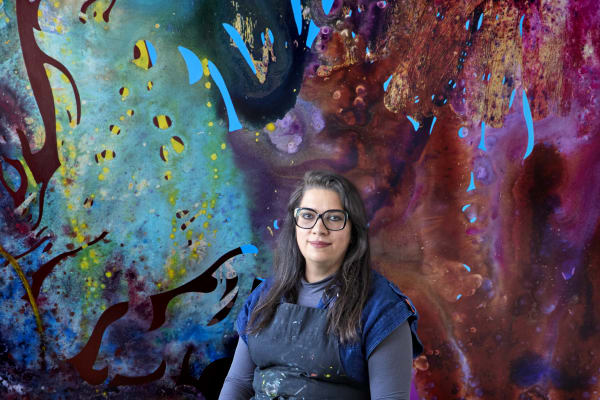
Artist's Talk: Vian Sora and Andrew Woolbright
Brooklyn Rail | March 25, 2025 March 25, 2025Artist Vian Sora joins Rail Editor-at-Large Andrew Woolbright for a conversation.Read more
-
-
THE PURPOSE OF ABSTRACTION
BY JOHN YAU
READ HERE
-
-
-
-

